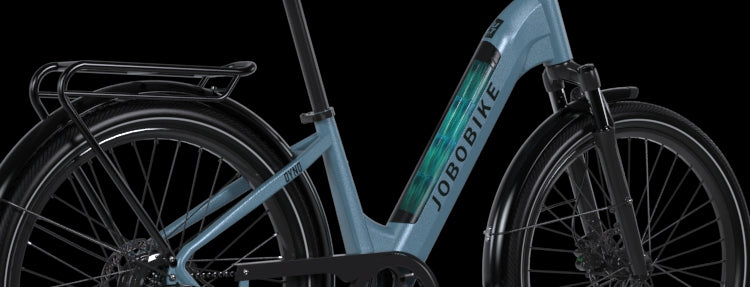Battery for Ebike
-

Welche Batterien eignen sich für Elektrofahrräder?
Lithiumbatterien sind die am häufigsten verwendeten Akku E-Bike. Sie bieten hohe Leistung, eine lange Lebensdauer und ermöglichen es, mit einer einzigen Ladung größere Entfernungen zurückzulegen. Im Vergleich zu Blei-Akkus haben Lithium-Akkus für E-Bikes eine höhere Energiedichte und sind umweltfreundlicher, da sie keine giftigen Substanzen enthalten. Im Vergleich zu Nickel-Metallhydrid-Akkus bieten E-Bike Akkus bessere Leistung und eine längere Lebensdauer. Darüber hinaus laden E-Bike Akkus schneller und sind leichter sowie kompakter, was die Mobilität der Fahrräder mit Akku verbessert.
Nickel-Metallhydrid-Batterie(NIMH) |
Lithium-Ionen-Batterie(LI-ION) |
Lithium-Polymer-Batterie(LIPO) |
| NiMH-Batterien sind der Nachfolger der NiCd-Batterien und werden derzeit in Europa weit verbreitet in Elektrofahrrädern mit Akku eingesetzt. Obwohl sie umweltfreundlicher sind als traditionelle Nickel-Cadmium-Batterien, haben sie im Vergleich zu Lithium-Akkus eine geringere Energiedichte, ein höheres Gewicht und längere Ladezeiten. NiMH-Akkus müssen regelmäßig aufgeladen werden, um in optimalem Zustand zu bleiben. | Lithium-Ionen-Akkus für E-Bikes sind derzeit die am häufigsten verwendeten Batterien in Elektrofahrrädern. Im Vergleich zu NiMH-Akkus bieten Lithium-Akkus 36V deutliche Vorteile: höhere Energiedichte, längere Lebensdauer, niedrigere Selbstentladungsrate und geringeres Gewicht. Sie bieten eine größere Reichweite und schnellere Ladezeiten, was sie ideal für längere Fahrten macht. Obwohl sie teurer sind, gleichen ihre Langlebigkeit und hohe Leistung dies vollständig aus. | Lithium-Polymer-Akkus (LiPo) sind eine Variante der Lithium-Ionen-Akkus, die ein kleineres Volumen bieten, aber dieselbe Energiemenge wie herkömmliche Li-Ion-Akkus liefern können. Im Vergleich zu Li-Ion-Akkus sind LiPo-Akkus leichter und eignen sich für Designs, die Platz sparen müssen. Allerdings sind LiPo-Akkus in der Regel teurer und erfordern eine sorgfältigere Handhabung und Wartung, um Schäden oder Tiefenentladung zu vermeiden. |
Batterien nach Spannung
Die Akkus für E-Bikes gibt es in verschiedenen Spannungen, wobei 36V und 48V die gängigsten Optionen sind. Höhere Spannungen nutzen die Energie effizienter und verbessern die Leistung des Elektrofahrrads. Modelle wie das Fat E-Bike Robin, das Klapprad Eddy und das Lasten-E-Bike Transer sind mit einer 48V-Batterie ausgestattet, während andere Modelle mit einem E-Bike Akku 36V betrieben werden. Der Akku für E-Bike 36V bietet eine gute Balance zwischen Leistung und Reichweite für alltägliche Fahrten.


Batterien nach Kapazität
Die Kapazität der E-Bike Akkus variiert und wird normalerweise in Wattstunden (Wh) gemessen. Häufige Kapazitäten reichen von 300Wh bis zu größeren 700Wh oder sogar darüber hinaus. Je größer die Kapazität, desto länger ist die Reichweite des Elektrofahrrads. Das Lasten-E-Bike Transer bietet mit der Möglichkeit, zwei E-Bike Akkus zu integrieren, eine maximale Reichweite von bis zu 135 km.


Typen und Einbauorte von Elektrofahrrad-Akkus





E Bikes akku Reichweite
Faktoren, die die Reichweite von Elektrofahrrädern beeinflussen
Your shopping cart
Your shopping cart is currently empty.










